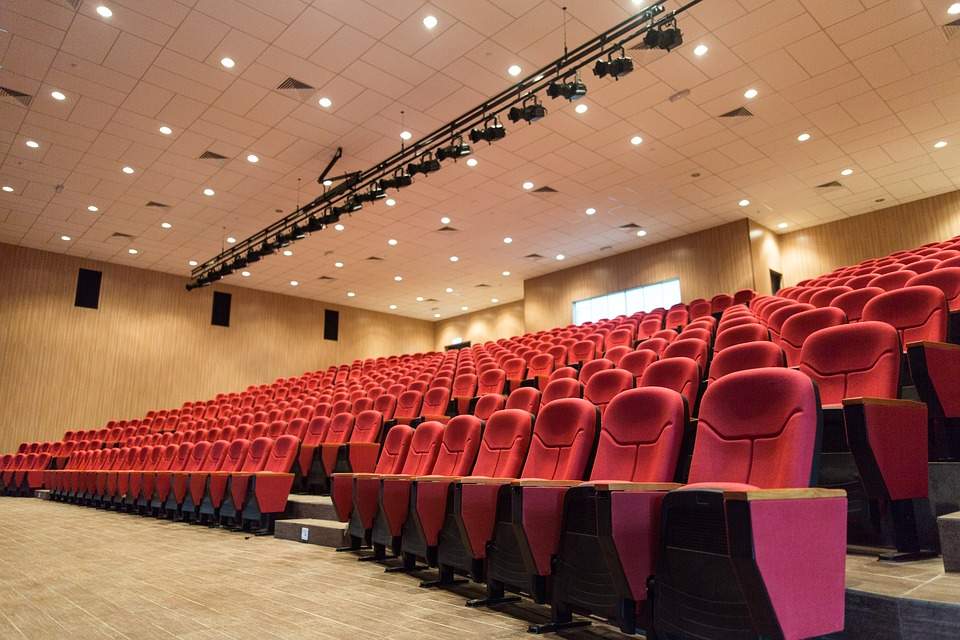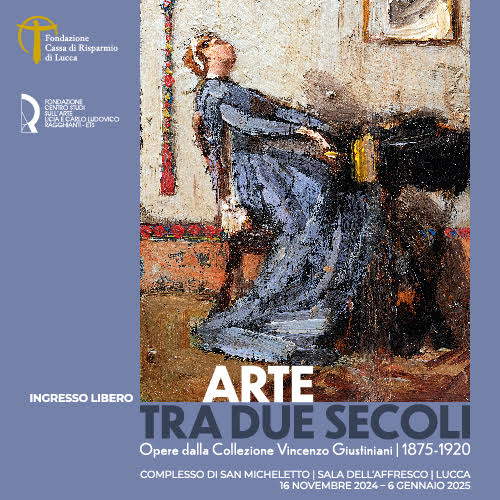Culture has not yet fully recovered from the pandemic. Federculture data
Federculture’s 19th Annual Report was presented yesterday in Rome , which this year aimed to answer some questions: is culture out of the crisis caused by Covid? Have we finally left behind the funereal years of the pandemic? At a first reading of the updated data it would seem so according to Federculture. The cultural sector, in its many declinations, seems to be experiencing a rebirth in the past year compared to the pandemic two-year period, even if the numbers have not yet returned to the levels of 2019, the last year before the pandemic. With restrictions on socializing filed away and travel and travel resumed, including internationally, there are signs of growth in all areas.
In 2022, the year to which the report’s data refer, saw a return of Italians to movie theaters, theaters, and museums; with a jump, for example, of those who went to the cinema from 9.1 percent in 2021 to 30.6 percent in 2022, or those who went to the theater from 2.9 percent to 12.1 percent, and those who attended a concert from 3.7 percent to 11.2 percent . Consumption also increased: Italian households increased their average monthly spending devoted to activities and services related to recreation, culture, and sports, which in 2022 amounted to 91.94 euros, an increase of 15.9 percent over the previous year.
However, as anticipated, a deeper and temporally broader analysis of the data reveals that although the recovery is there and is tangible, in comparison with the pre-pandemic the signs are not so positive and the plus signs turn negative. Indeed, in all the phenomena considered, the comparison with 2019 shows that the levels of growth achieved have in fact not yet bridged the deep rut carved by the 2020-2021 crisis.
This is demonstrated by the data on cultural employment, which, despite the strong recovery recorded in 2022 (+5.7 percent over 2021), has not yet returned to the levels of 2019 (a year on which it marks a -1.4 percent); as well as those on tourism, which is certainly booming, especially as regards the cultural segment, but in 2022 still about 15 percent below pre-Covid levels. As Unwto’s Eurobarometer notes, international tourism in 2022 has recovered about 63 percent of pre-Covid levels, with Europe and the Middle East leading the way. In fact, international arrivals reached 917 million globally, a big increase on 2020 and 2021, but still far from the 1.4 billion mark in 2019. Europe is the destination with the highest number of arrivals in 2022, 598 million, with which it recovers 80 percent of tourism compared to 2019, a year compared to which the negative change is 21 percent. Unwto’s forecasts estimate globally for 2023 a recovery of 80-95% on tourism levels in 2019, while for Europe they estimate a recovery that will lead to exceeding pre-pandemic results. As for Italy in 2022 saw an increase in the flow of tourism compared to 2021 in both international (+104%) and domestic (+22.5%) arrivals, and the trend in presences overlaps with that of 2019, particularly for the months between September and December. Growth continues in 2023: the first seven months of the year see a 19% increase in international tourists, while Italian tourists are down slightly -1.4%. Also, foreign travelers’ spending in Italy in 2022 has grown significantly (+108%), in particular exceeding 44 billion euros has doubled compared to 2021, returning to pre-pandemic levels. Not all Italian regions, however, although they are growing strongly on 2021, see a recovery on 2019, among them Piedmont, Tuscany, and Latium; while those that increase the most include Puglia, Trentino Alto Adige, and Umbria. As the Bank of Italy notes, international tourist spending is driven by the strong expansion of spending related to visits to cities of art (+275 percent). “Cultural tourism spending” amounted to 12.4 billion euros in 2022, and remains the largest spending segment, accounting for 16.8% of total spending. In 2022, the growth of tourism in large art cities is +104.4% in smaller municipalities with a cultural vocation, the increase is +39%.
The overall indicator on cultural participation has also, yes, risen to 23.1% in 2022, but in 2019 it was 35%, and analyzing individual sectors still shows, again with reference to 2019, almost halved the share of people who go to the theater, cinema and concerts. By the way, and this is a worrying sign, despite a sharp increase in 2022 among young people (under 24) cultural participation remains more than 20 points below that of 2019.
It is precisely young people, though not only them, who are the protagonists of the focus on training in the cultural sector, which is the main theme of the 2023 Report and which is analyzed in the volume both in terms of aspects related to training supply (higher education, research, vocational training) and in the links between the training system and work. Covid-19 has, in fact, brought attention back to the social role, value, and specificity of cultural work, while highlighting its discrasies and critical issues. Therefore, training - at different levels - aimed at providing knowledge, skills and critical tools to those who intend to enter the cultural and creative sector professionally, which is going through one of the most complex phases in recent decades, while new challenges await those who work in it, has taken on renewed centrality.
For this reason, in addition to a wide range of interventions by authoritative experts in the field, who analyze and describe the field of cultural education under multiple profiles highlighting its virtuous aspects and knots to be solved, Federculture has also conducted a specific research trying to provide for the first time an updated and as complete as possible picture, without claiming to be exhaustive, ofhigher education, analyzing its supply and demand, within the cultural sector. What emerges is a very articulated picture that ranges from bachelor’s degree courses, about 1,000 of which are surveyed, to postgraduate master’s degrees, to more than 5,000 AFAM courses and the ITS Academy, which, with 30 training courses activated in the cultural sphere, are the latest to appear in this sector.
A wide-ranging system of offerings that collects a total of about 450,000 enrollees and introduces into the world of work about 90,000 graduates in the various levels of training, among whom the female component prevails and the presence of foreign students is also significant (about 15 percent of those enrolled in AFAM courses, for example).
That of cultural education is also a moving and updating system-some training areas seem to be well established over the years (such as the area of cultural management, or the promotion and enhancement of cultural goods and activities) but there is also room for courses that intercept more recent and innovative training and professional needs, with the number of enrolled students and graduates increasing over the years. To the cultural area of tertiary education according to Eurostat are attributable 20.2 percent of the total number of Italian students, it should be noted that this is the highest percentage among the countries of the Europe of 27. From this broad analysis it emerged that the needs are confirmed to be, on the one hand, to improve the quality of services offered by already employed profiles, called upon to provide increasingly advanced services; on the other hand, to train a new lever of employees, in order to offer them adequate employment opportunities in the system of public and private institutions working for culture. In both cases, it is necessary to stitch together preparation, experience, new knowledge and skills to bring together academic knowledge and teachings with the experience of people and profiles working in the field.
Finally, as forcultural employment, it was still lower in 2022 than in 2019. On ISTAT’s “Labor Force Survey” data, it is estimated at 815,000: in 30.2 percent of cases, these are employed in cultural occupations and sectors, 45.5 percent are employed in cultural occupations and non-cultural sectors, and the remaining 24.3 percent are employed in non-cultural occupations and cultural sectors.
Employment in cultural occupations declined sharply during the pandemic phase and, despite a strong recovery in 2022 (+5.7 percent compared to 2021), has not yet returned to 2019 levels
(-1.4% compared to 2019). Between 2019 and 2021, the decline in cultural employment was more pronounced than that seen in total employment (-6.7 percent vs. -2.4 percent), with a reduction in both absolute values and in the share of the employed, which fell from 3.6 percent in 2019 to 3.4 percent in 2021. In 2022 the share returned to 3.5 percent. The decline observed in 2020 was much steeper than that of overall employment (-8.0% vs. -3.1%); while the recovery in 2021, while moderate, was nevertheless greater for cultural employment than for the total (+1.4% vs. +0.8%), and in 2022 it was markedly more pronounced (+5.7% vs. + 2.4%).
Ultimately, according to Federculture, the reading of the state of the sector induces cautious optimism overall, but it is also an opportunity to reaffirm the need for interventions that consolidate the growth of the cultural sector in all its spheres, both on the production and demand sides, supporting businesses as much as citizens, in order to relaunch the entire system toward a model in which culture is the fulcrum of lasting, inclusive, sustainable development.
“Culture is indeed a great resource for Italy. This is demonstrated, if there was still a need, by the summer just past that saw culture ’save’ the tourist season,” comments Andrea Cancellato, president of Federculture. “But it is also clear that there are many knots to be addressed, and only great commitment and political will can make it possible to set up possible solutions. What is needed, therefore, is an efficient ministry, a regulatory production that is clear in its objectives and management, additional resources that are not exclusively public, and cultural institutions and businesses that are equipped for a climate that is anything but simple. The world of culture, which we represent, is an active participant, ready, as always, to make its contribution of analysis and proposal, which even today we reminded the government and parliament. I mention only a few titles: approval of the law on cultural and creative enterprises; defiscalization of cultural consumption; refinancing of the Culture Fund; greater possibility for private individuals to use Art bonus. The possibilities for intervention are many, often at ’zero cost’ to public finances; the sector has been waiting for concrete answers on this for a long time.”
 |
| Culture has not yet fully recovered from the pandemic. Federculture data |
Warning: the translation into English of the original Italian article was created using automatic tools. We undertake to review all articles, but we do not guarantee the total absence of inaccuracies in the translation due to the program. You can find the original by clicking on the ITA button. If you find any mistake,please contact us.






























